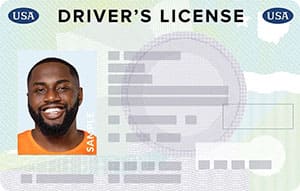- 0 Incorrect (7 allowed to pass)
- 0 Correct
- Updated for January 2025
- Based on official North Carolina 2025 Driver's manual
Free North Carolina DMV Motorcycle Permit Practice Test 2025
Welcome to the North Carolina Motorcycle Endorsement Practice Test. This test is provided free of charge and should be taken by anyone who is studying to get their North Carolina Motorcycle Endorsement. For the greatest chance of success answering these questions, carefully read the North Carolina Motorcyclists’ Handbook before beginning this exam. The handbook can be viewed and printed online. All the questions will focus on information related to driving owning and driving a motorcycle safely. This test has a total of 25 questions. Passing this exam will not guarantee you will pass the state test. To pass the exam you must answer 21 questions correctly. Every question has four answers to choose from. Only one answer is correct. Use the hint feature if you’re not sure of the answer, but remember that there are not hints on the state exam. Every time you answer a question correctly, you’ll move on to the next question. If you choose a wrong answer, you will be shown the right answer and an explanation. You can answer these practice questions as many times as you like. Good luck!
- Perfect for learner’s permit, driver’s license, and Senior Refresher Test
- Triple-checked for accuracy
What you need to know

What to expect on the actual NC DMV exam
questions
correct answers to pass
passing score
minimum age to apply
Helpful links
List of questions (classic view)
- Grabbing the front brake can result in
- The road ahead looks slippery. What should you do?
- If your front tire fails while you're riding, you should ease off the throttle,
- What is the best way to stop quickly?
- Under North Carolina law, who must wear a helmet while riding a motorcycle?
- Why is it important to cross railroad tracks at an angle of at least 45 degrees?
- If you suspect that the driver of the vehicle ahead of you doesn't know you're there, what should you do?
- How can you increase your safety while riding at night?
- When making a normal turn, should the motorcycle rider lean?
- Blind intersections can be dangerous because
- Studies have shown that most crashes involved riders who
- If your motorcycle starts to wobble, what should you do?
- When parking against a curb, you should park at a ________ angle.
- The best protection against flying objects while you're riding is
- Keeping your knees against the gas tank
- If you need to shift gears as you approach a turn, when should you do so?
- Maintaining or slightly increasing your speed in a turn
- You can help other vehicle operators notice that you are slowing down by
- Is it safe to share a lane with another motorcycle?
- Head checks while riding
- On the highway, if you see a car on an entrance ramp that is about to merge into your lane, you should
- In a single lane of traffic, there are _______ lane positions for a motorcycle.
- Changing your lane position can
- Before changing lanes on a multilane road, you should check
- Which of the following surfaces provide the least traction?
- What should you do on Step 3 of passing?
- When you are being passed from behind,
- Which portion of the lane should you be in before starting to pass?
- What should you do to avoid colliding with a vehicle cutting in?
- As you are riding, an object appears suddenly in your path. What should you do?
- Alabama: Test 1 / Test 2
- Alaska: Test 1 / Test 2
- Arizona: Test 1 / Test 2
- Arkansas: Test 1 / Test 2
- California: Test 1 / Test 2
- Colorado: Test 1 / Test 2
- Connecticut: Test 1 / Test 2
- Delaware: Test 1 / Test 2
- District of Columbia: Test 1 / Test 2
- Florida: Test 1 / Test 2
- Georgia: Test 1 / Test 2
- Hawaii: Test 1 / Test 2
- Idaho: Test 1 / Test 2
- Illinois: Test 1 / Test 2
- Indiana: Test 1 / Test 2
- Iowa: Test 1 / Test 2
- Kansas: Test 1 / Test 2
- Kentucky: Test 1 / Test 2
- Louisiana: Test 1 / Test 2
- Maine: Test 1 / Test 2
- Maryland: Test 1 / Test 2
- Massachusetts: Test 1 / Test 2
- Michigan: Test 1 / Test 2
- Minnesota: Test 1 / Test 2
- Mississippi: Test 1 / Test 2
- Missouri: Test 1 / Test 2
- Montana: Test 1 / Test 2
- Nebraska: Test 1 / Test 2
- Nevada: Test 1 / Test 2
- New Hampshire: Test 1 / Test 2
- New Jersey: Test 1 / Test 2
- New Mexico: Test 1 / Test 2
- New York: Test 1 / Test 2
- North Carolina: Test 1 / Test 2
- North Dakota: Test 1 / Test 2
- Ohio: Test 1 / Test 2
- Oklahoma: Test 1 / Test 2
- Oregon: Test 1 / Test 2
- Pennsylvania: Test 1 / Test 2
- Rhode Island: Test 1 / Test 2
- South Carolina: Test 1 / Test 2
- South Dakota: Test 1 / Test 2
- Tennessee: Test 1 / Test 2
- Texas: Test 1 / Test 2
- Utah: Test 1 / Test 2
- Vermont: Test 1 / Test 2
- Virginia: Test 1 / Test 2
- Washington: Test 1 / Test 2
- West Virginia: Test 1 / Test 2
- Wisconsin: Test 1 / Test 2
- Wyoming: Test 1 / Test 2
Your go-to, trusted source
Experience the Driving-Tests differenceOur commitment to accuracy and quality in our practice tests
Explore our rigorous, multi-tiered verification process that ensures each question mirrors the official manual for unparalleled accuracy.

At Driving-Tests.org, we understand the importance of reliable and accurate practice tests to help you prepare for your DMV exam. That's why we've developed a meticulous process to create and continually update our practice questions, ensuring they reflect the most current driving laws and regulations.
Here's an inside look at how we maintain the highest quality in our practice tests.
Content Creation and Verification Process
- Alignment with Official Manuals:
Every question we develop is based on the most recent version of each state's official driving manual. Our team regularly monitors each state DMV's website for the latest updates to ensure our practice tests are always aligned with the most current information. - Community Feedback Integration:
We leverage feedback from our vast community of users to understand which topics are most frequently tested. This helps us focus on the areas that are most relevant and beneficial for your preparation. - Expert Content Creation:
Our in-house editor, Steven, who has extensive experience in driver education, crafts each question with precision. He conducts a thorough review of each question against the official manuals to ensure accuracy. - Rigorous Review Process:
Once Steven has finalized a set of questions, our team conducts a joint review session. This second level of scrutiny involves content accuracy, proofreading, and fact-checking to eliminate any errors. - User Feedback Mechanism:
After a question goes live on our site, we keep the lines of communication open. Each question features a feedback button, inviting users to report any issues or errors. This continuous feedback loop allows us to address and rectify any concerns promptly. - Responsive Updates:
In line with our commitment to accuracy, we quickly update our practice questions to reflect any changes in the DMV manuals. Additionally, we update the free electronic copy of the state's driver's license manuals on our site, typically within a few days after the DMV publishes them.
Our thorough quality control process ensures that you have access to practice tests that are as accurate and up-to-date as possible. We believe in the power of well-prepared drivers and are dedicated to providing you with the best study tools to help you succeed on your DMV exam.
Pass the First Time. Guaranteed.
Be fully prepared in days, not weeks. Get full access to our entire program, starting at $49.
950 Exam-Like Questions
Unlock state-specific questions vetted by DMVs and seen on the official exam.
Industry-Leading 97% Success Rate
Compare with the average US passing rate of 49%.
Trusted by over 1.15 Million customers
The only program recommended by DMVs.

